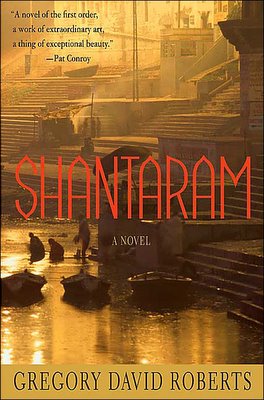
HAPPY 100TH POST TO ME!!!!
I'd like to thank my 5 regular readers for inspiring me and coming back everyday! Woo hoo! 100!
Once in awhile you get shown the light, in the strangest of places if you look at it right.









Below is a review that I found online, if you want to read more....
Shantaram by Gregory David Roberts
Shantaram is an epic story spanning more than a decade of life on the run, large in every way – over 900 pages, real not only because it was, but also by the gifted writer at the helm, who’s talent and awesome ability leap forth from the first page, and that promise of greatness holds through to the novel’s end. It is a masterpiece; intelligent, thrilling, romantic, philosophical, humorous and with elements of outright horror – Shantaram has it all!
When the story begins, Greg is now on the run, after breaking out of prison in Australia, where he was convicted of armed robbery while under the influence of drugs. His life on the run takes him from New Zealand to Bombay, India. Using an alias to enter Bombay, ‘Lindsay’ attaches himself to a group of tourists to pass customs and immediately is met by a young man -- the unforgettable Prabaker -- claiming to be Bombay’s best city guide. ‘Lindsay’ meets and befriends so many wonderfully engaging, vivid people that populate this story. He joins the Indian mafia and is enthralled with and loved by its leader, exploring the father/son and philosopher/student relationships pondering good and evil, man and God. And it is here too in Bombay that he falls in love Karla. The eloquent words of love and loss Greg writes as he learns of life and who and what kind of man he is, and struggles to become, while he manages to survive on the run, are exciting mesmerizing and enthralling: a story to read and savor!
Shantaram is a thriller of the highest order: a love story that is profound and penetrating, cut bloody with truths, and seen through the eyes of a poet, philosopher, gangster, smuggler and a man on the run.





My oh my, go check out Mr Ratburns Christmas balls!
And, while you're at it...go see what's happening at our new group blog.....







